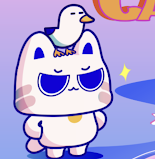Typography / Task 1
Task 1 - Exercises
. CONTENT .
3) Instruction
. CLASS SUMMARY .
Week 1
A briefing about the course module. Learning how to create E-portfolio by using Blogger.
Week 2
Mr.Vinod delivered us a short presentation about understanding feedback. Afterwards, we received feedback from Ms.Hsin on the sketches we had completed during the first week.
Week 3
Learn how to animate our digitization after receiving feedback. Next up, we can attempt our Task 1 / Exercise 2.
Week 4
We are required to improve the performance of our animation. After finishing it, we can continue with our Task 1 / Exercise 2.
Week 5
. LECTURES .
Week 1
💬 (I) Introduction
"To understand what is good or bad or suitable in
typography, it takes time, trial and error."
Design is a highly iterative process, we should keep an open mind when
receiving feedback and criticism. We should always aim to better ourselves.
Design is a highly iterative process, we should keep an open mind when receiving feedback and criticism. We should always aim to better ourselves.
💬 (II)Development
We need more research on our own community, nation, and
civilization as a contribution to the other body of
knowledge.
Gain a more holistic perspective to develop our body's knowledge
and broaden our horizons.
Week 2
💬 Text (Part 1)
Designers tend to set type depending upon their personal preference. However, keep in mind the typographer’s first job —— clear, appropriate presentation of the author’s message.
Week 3
💬 Text (Part 2)
Week 4
💬 Basic
Week 5
💬 Understanding Letterforms
. INSTRUCTIONS.
Showcase a word by using design form through exaggeration and emphasis to convey the meaning of a word in a clear way.
There are 6 words voted by us, as follows:
CHAOS ; SPRING ; DIVE; BOUNCE ; FLOAT ; CRUSH
We need to choose four words from the list and sketch at least three design ideas for each word during the first week.
(I) Sketches
just float
squash | beating heart
figure 2.1.4 Crush sketch
(II) Digitization
In week 2, we will be using Adobe Illustration to digitize the sketches.
(III) Animation
And we animate it into GIF format with Adobe Illustrator and
Photoshop during week 3.
I chose 'CRUSH' as the word for animation.
Final result:
Task 1 / Exercise 2 - Type Formatting
Learning how to use kerning and tracking by using Adobe
Indesign.
Font/s: Futura Std Bold
Type Size/s: 41pt
Leading: 43pt
Paragraph spacing: 0mm
Font/s: Univers Lt Std 55 Roman
Type Size/s: 9pt
Leading: 11pt
Paragraph spacing: 3.881mm
Characters per line: 55
Alignment: Flush left
Columns: 4
Gutter: 5 mm
figure 3.2.7 Final version (PDF)
. FEEDBACK .
Week 2
General:
Designs that contain too many graphic and distorted elements need to be avoided, designs should focus more on the Type. And I need to update my further reading.
Specific:
For sketches:
Chaos - (1) and (4) can be combined.
Bounce - (3) and (4) are the most ideal, I should choose a font that can be combined and easily adjusted with the word 'n'.
Float - (4) is ideal, I need to select a font that is suitable for it.
Crush - too many graphic and distorted elements. (3) can be worked but I need to make some adjustments to make it look less animated.
Week 3
General:
Need to update my further reading and reflection.
Specific:
For digitization:
The order of Chaos should be adjusted because it can be confusing and takes time to figure out what word it is.
Week 4
General:
-
Specific:
Ms.Hsin suggested that I convert the PDF lecture notes to JPEG or just key them in directly in Blogger due to the accessibility issues.
Week 5
General:
-
Specific:
Ms.Hsin said it is better to arrange everything in a balanced and neat order so it will look more comfortable.
. REFLECTION .
Experience
I realized that I had only a smattering of this subject, I didn't even know typography played such a crucial role in the design field. And I always mix the concept of type design and graphic design, Ms.Hsin also told us again and again they are not the same things. Okay, I need some times to explore and differentiate between the two of them.
Observation
As design learners, it is important for us to not only improve our practical skills but also develop our theoretical knowledge. We had to clearly understand what are we doing, and why are we doing this.
Findings
There are many things I need to learn about using Ai and Id. They are a bit difficult for me as it is my first time using these software, so I need to catch up quickly.


















.png)
Comments
Post a Comment